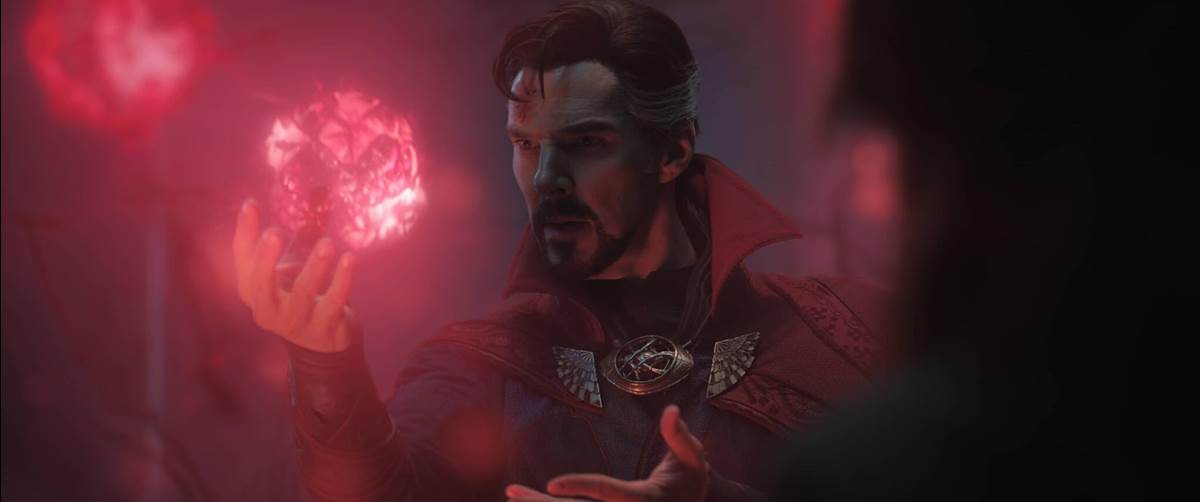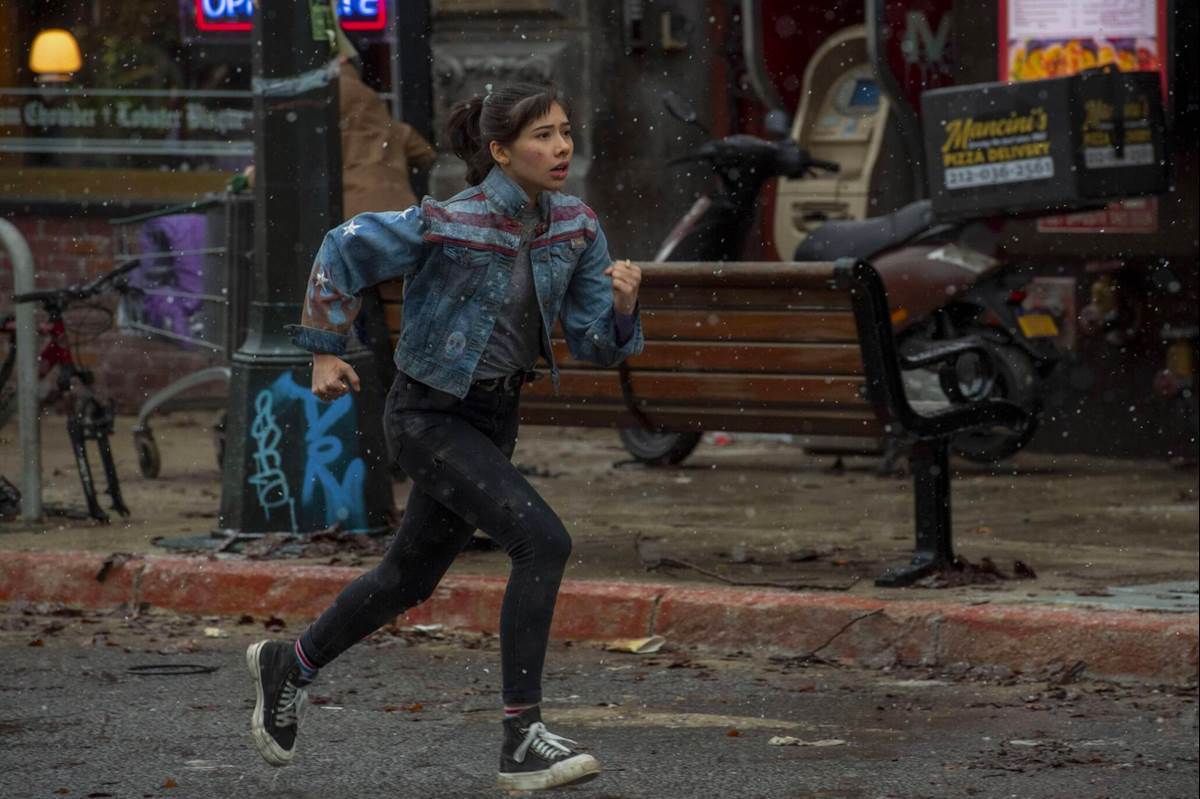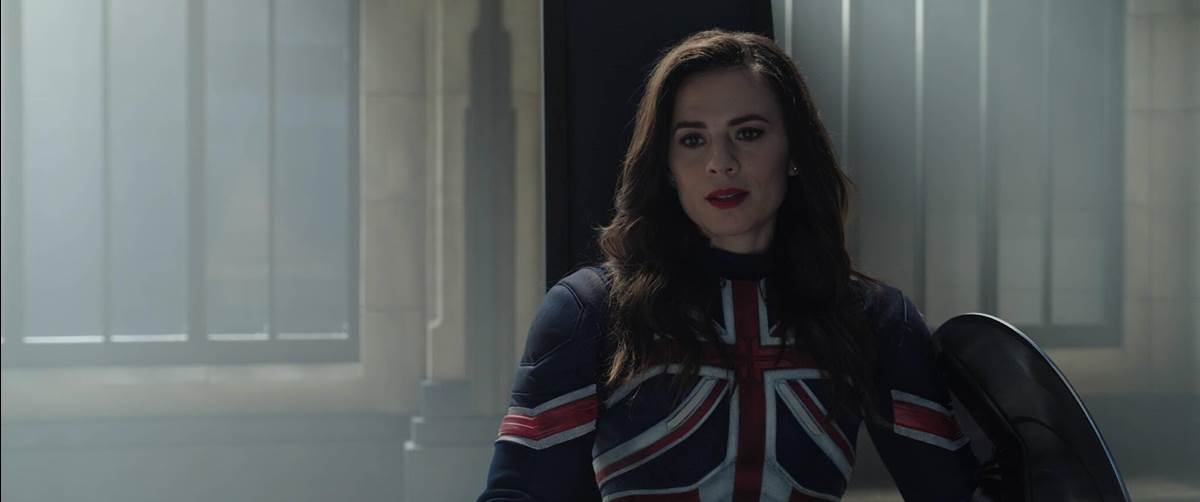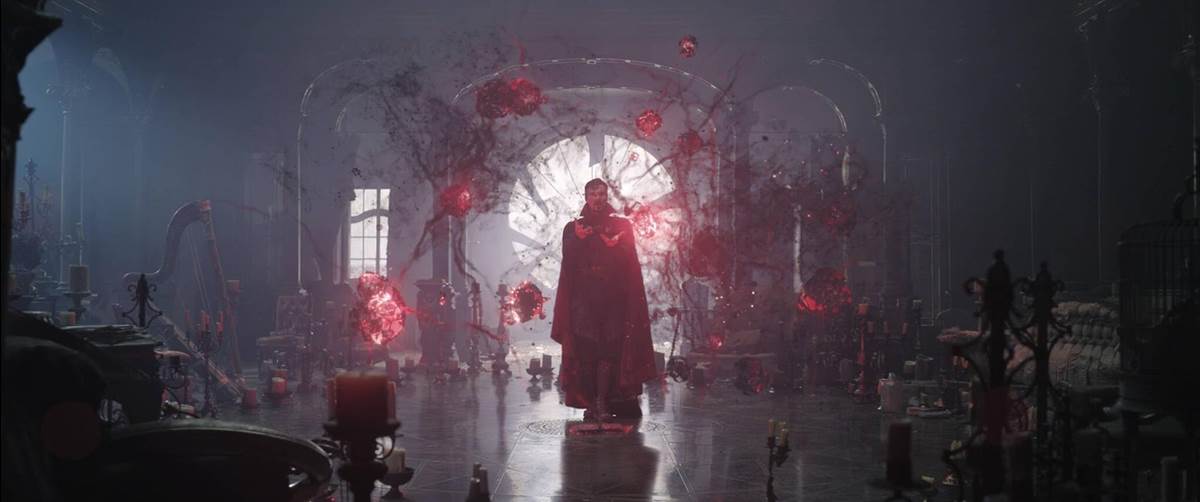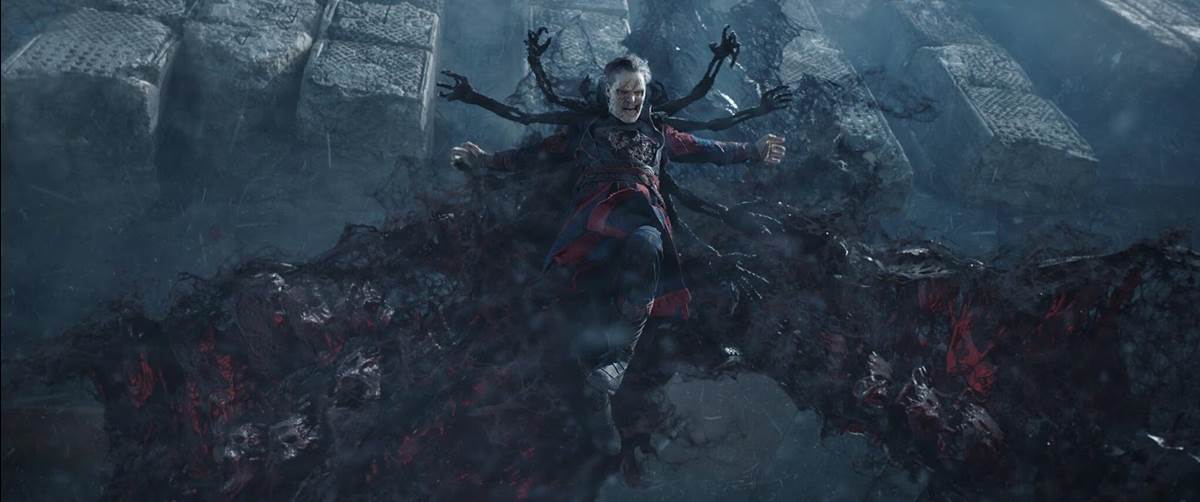TV Review – “Assembled: The Making of Doctor Strange in the Multiverse of Madness” Gives Fans the Most In-Depth Behind-The-Scenes Look Yet
Marvel Studios Assembled continues to give us a look behind the scenes into the making of our favorite Marvel Cinematic Universe projects. The latest installment examines the making of Doctor Strange in the Multiverse of Madness, and it does so in a way that is slightly different from what we’ve seen previously in this series.
First off, Marvel Studios Assembled: The Making of Doctor Strange in the Multiverse of Madness uses a host and it is none other than the Pizza Poppa himself, Bruce Campbell. The opening of the doc introduces Campbell as the host and does so in hilarious fashion. He then pops up several other times to throw in some jokes and set up segments. It was a nice touch to include the actor, who often makes appearance in Director Sam Raimi’s films.
Speaking of Raimi, the Marvel team spends a good amount of time in the beginning just praising this films director for his creative vision and professionalism. Writer Michael Waldron credits Raimi’s films as a big reason he is doing what he does now. The one aspect I wash we got to hear a bit more about was the relationship between Raimi and Marvel Studios head Kevin Feige, who worked very early in his career on Raimi’s Spider-Man. That’s a very interesting dynamic to have come full circle and it would have been fun to see it explored a bit more.
Waldron also gets a chance to talk a bit about his experience writing this film. He explains that he had three weeks to create a first draft and by the time he had finished, the pandemic struck and everything was shut down. Most interestingly though, when production resumed, Waldron says he threw out his entire script and started all over again. Fans everywhere are now likely wonder what the first script included.
One of the best parts of the Assembled series is always meeting the new cast members who are just joining the Marvel Cinematic Universe. In this case, that is Xochitl Gomez, who plays America Chavez. Gomez appears to bring a youthful energy to the set and her charm is infectious for the audience. It’s always great to see new actors show their enthusiasm for the role and she has no shortage of that, especially when she is teaching Benedict Wong how to dance on TikTok.
Of course, while Gomez is great and Benedict Cumberbatch of course delivers another incredible performance as the titular hero, the real star of the film is Elizabeth Olsen. Wanda’s switch from beloved hero to tortured villain in this film is one of the most compelling stories the MCU has given us to date and Olsen gets to share her thoughts on it here. It’s very interesting to get to see her share her thoughts on playing the antagonist and she appears to have had a lot of fun doing so.
Another ont of the best parts of this series is always getting a closer look at the unbelievable costumes created for the film. In this case, we get to see both America’s and Wanda’s costumes, with the latter being far more elaborate and impressive. While they don’t share quite as many details as they did in The Making of Shang-Chi and the Legend of the Ten Rings, there is still a fair amount of interesting insight shared on the creation of these outfits.
One of the elements I was surprised to see was the creation of the battle at Kamar-Taj. Large-scale action sequences have become such commonplace in the MCU that fans likely don’t even think twice about them, but this doc gives us a great look at just how much work went into this scene. Watching the stunt performers react to actual explosions was eye opening and very cool to see.
Another element that is likely lost on most viewers is the amount of wire work that went into the making of this movie. When dealing with characters with magical abilities, they are very rarely on the ground and often need to be suspended in air. Most of the cast gets a chance to talk about what it was like to constantly be dangling in a harness and it’s interesting to see the work and choreography that goes into those types of scenes.
Of course, the elephant in the room for the duration of this doc is the presence of the Illuminati in this film. With such a big surprise featured, fans are bound to be interested in hearing more about how it came to be. Waldron gets to talk about the thought process that went into choosing the characters to include and that was certainly very interesting to hear.
However, the lone disappointing part of this documentary is the cast members we did not get to hear from. Haley Atwell and Lashana Lynch reprised their roles as Peggy Carter and Maria Rambeau respectively, and hearing their thoughts on those returns would have been fascinating. And of course, hearing from Sir Patrick Stewart or John Krasinski, who both shocked audiences by portraying Charles Xavier and Reed Richards, would have been the absolute highlight. Unfortunately, none of those actors are features in this doc. Of course, we understand why Anson Mount wasn’t featured. We don’t want Black Bolt talking too much.
While a multiverse-jumping movie that visits the same locations on multiple occasions seems like it would be easy as far as set design goes, this doc proved that it was exactly the opposite. The team gets to show off the incredible sets that were built for this film, including an entire New York City block and the Sanctum Sanctorum. Both of those sets were then altered based on the different universes visited in the film, which is just another level of movie making. Elizabeth Olsen even goes as far as to say she is having the team ship her the Wundagore set so she can keep it in her backyard.
Another one of the unique segments in this doc is the hand choreography used to create the magic elements in the film. Julian Daniels, the film’s “Magic Choreographer," shows fans the ins and outs of the hand movements Strange uses to wield his magic. It’s amazing to learn that all of these small movements actually have meaning as though they are their own language.
We also get a great look at all of the different versions of Doctor Strange himself and the costumes they wear. Waldron explains what they wanted each character to be as we see them come to life from concept to finished product. Unfortunately, we don’t get to hear much Cumberbatch on bringing these different versions of the character to life.
The conversation about the zombie Strange of course leads to a discussion of the horror elements that Raimi brought to the film. Feige expressed the idea that once they decided to lean into the horror element of this story, they decided that Raimi would be the only person who could direct it.
Campbell returns to let us know that the film also includes a whole bunch of “Raimi-isms" or easter eggs from his previous films. That includes his car, which has appeared in all of his films, the use of mirrors, and of course, Campbell himself.
Overall, Marvel Studios Assembled: The Making of Doctor Strange in the Multiverse of Madness is one of the strongest installments in this series, right up there with the editions focused on Loki and Shang-Chi and the Legend of the Ten Rings. The only omission from this documentary is insight from some of the cast, most specifically Krasinski and Stewart. However, it delivers in a big way on the stunt work, sets, costumes and so much more.
You can watch Marvel Studios Assembled: The Making of Doctor Strange in the Multiverse of Madness on Disney+ now.

